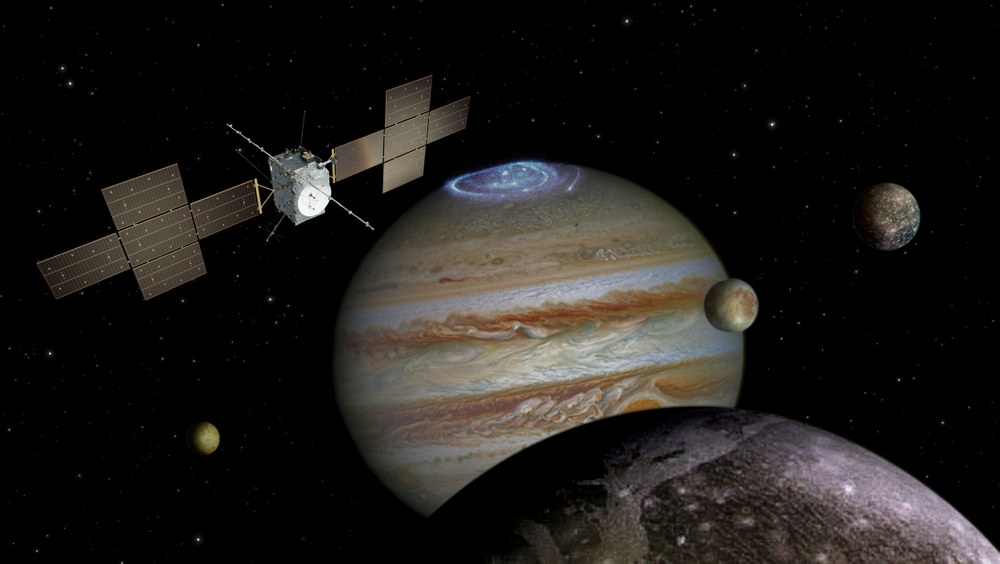JUICE

In 2012 ESA selected the JUpiter ICy moons Explorer (JUICE) as the first L-class mission within the Cosmic Vision Programme. This mission will first explore Jupiter, its magnetosphere and satellites in orbit around Jupiter before going finally into orbit around Ganymede, the largest satellite in the solar system. JUICE will be the first orbiter around a moon (other than Earth’s moon) in Solar System exploration. It was launched om 14 April 2023 and is now undergoing an interplanetary cruise of about 8 years. After arrival at Jupiter in 2031, the spacecraft will perform a 3-year Jupiter tour including two flybys of Europa at 400 km altitude and multiple flybys at Ganymede and Callisto. Finally, JUICE will go into orbit around Ganymede including a 5,000-km altitude circular orbit and a 500-km circular orbit for at least 132 days until the end of nominal mission.
DLR contributions consist of the GALA (Ganymede Laser Altimeter) (PI-ship), the Italian/German JANUS (Jovis, Amorum ac Natorum Undique Scrutator) visible camera (Co-PI-ship) as well as defining instrument observation sequences and assigning high precision environment maps including digital terrain models, geological context and spectral analysis of the surfaces of Jupiter’s moons.
Applying time-of-flight measurements using short laser pulses 30 times a second, GALA will obtain Ganymede’s topography on global and local scales. Tidal variations of surface elevations measured by GALA are indicative of the presence of a subsurface ocean. This huge reservoir of liquid H2O located deep under the icy surface is believed to contain more water than all Earth’s oceans combined, making Ganymede among other icy satellites, e.g. Europa, Titan and Enceladus, an intriguing candidate for possible habitable environments in the outer solar system.
JANUS will determine the formation and characteristics of magmatic, tectonic, and impact features, relate them to surface forming processes, constrain global and regional surface ages, and investigate the processes of erosion and deposition. Global medium-resolution imaging of Ganymede and important parts of the surface of Callisto better than 400 m/pixel (resolution limited by mission data volume) will provide contextual geological information. The camera system has 13 panchromatic, broad- and narrow-band filters in the 0.36 μm to 1.1 μm range, and provides stereo-imaging capabilities. JANUS will also allow the relation of spectral, laser and radar measurements to geomorphology and will thus provide the overall geological context.
In May 2023 the two instruments GALA and JANUS were successfully commissioned demonstrating full functionality of all units after launch.
Hardware Participation of the DLR Institute of Planetary Research
- GALA (Ganymede Laser Altimeter)
PI: Hauke Hussmann
- JANUS (Jovis, Amorum ac Natorum Undique Scrutator, camera system)
Co-PI: Ganna Portyankina
Scientific Participation of the DLR Institute of Planetary Research
- GALA (Ganymed Laser Altimeter)
- JANUS (Jovis, Amorum ac Natorum Undique Scrutator, camera system)
- MAJIS (Moons and Jupiter Imaging Spectrometer)
